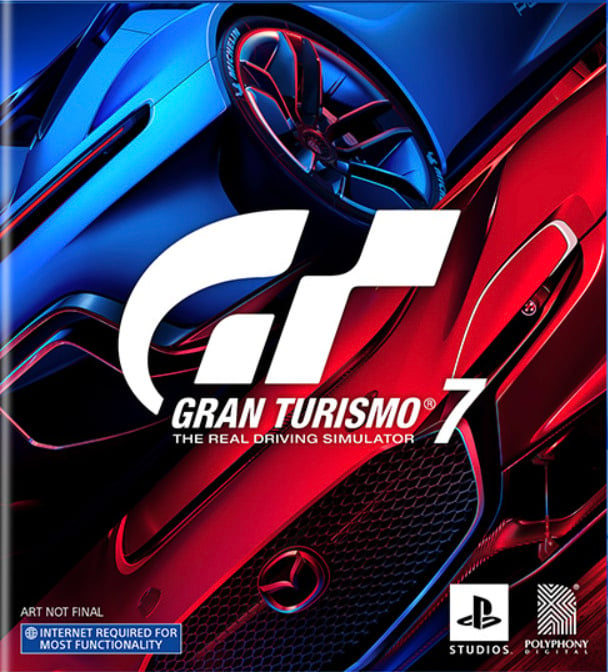As it celebrates its 25th anniversary, the Gran Turismo franchise finds itself in a bit of an odd position. After a somewhat forgettable Gran Turismo 6 and a rebellious Gran Turismo Sport, a lot of critics have claimed that despite strong sales, the series had lost its way, turning away from many of the founding principles that made it so popular in the first place.
It makes it feel as if there is a lot riding on Gran Turismo 7, and more pressure than ever before on the series’ creator, Kazunori Yamauchi. Can he create a modern Gran Turismo game that captures imaginations like the original? Does that formula still hold up in today’s environment? Can he satisfy a rabid fanbase with high expectations, while still creating a title that appeals to a new generation that might not have the same passion or knowledge of cars?
Let’s find out!
Table of Contents

Content and Value for Money
A lot of people head straight for the Gran Turismo 7 car list to see what’s available in the title, and many will be quick to notice that the majority are coming over directly from GT Sport. That’s true, but because you can do so much with all these cars now, they feel like fresh additions to the series once you actually get your hands on them.
Speaking of Gran Turismo Sport, let’s get that out of the way right now. GT7 is a much larger and more ambitious game than Sport ever was, and it shows from the outset. Sport’s headline features, Sport Mode and Photo Scapes, are now just a few locations spread around in GT7’s expansive World Map.
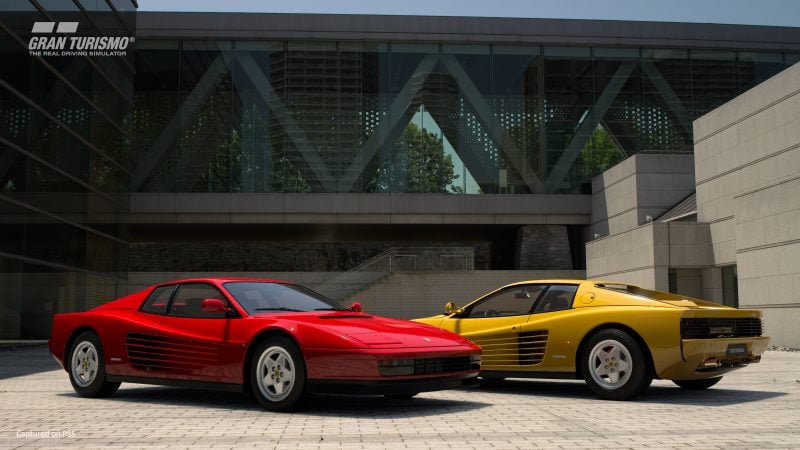
Car Collecting
Gran Turismo 7 places car collecting front and center, perhaps more than any other title before it. The game even trades Sport’s “Experience Points” for “Collector Points”, which you earn by — you guessed it — collecting more cars. Acquiring more cars is literally one of the core elements of progressing through the game, and it works, for the most part.

In the early stages, it actually feels like the game throws too many cars and credits at you. I am nostalgic for the older titles which required you to study and seek out cars which meet the requirements for the opening races; even in the advanced player mode, GT7 does a bit too much hand-holding for my taste at the start. However, as I progressed, this feeling went away and I finally had the opportunity to start shopping and making decisions on my own.
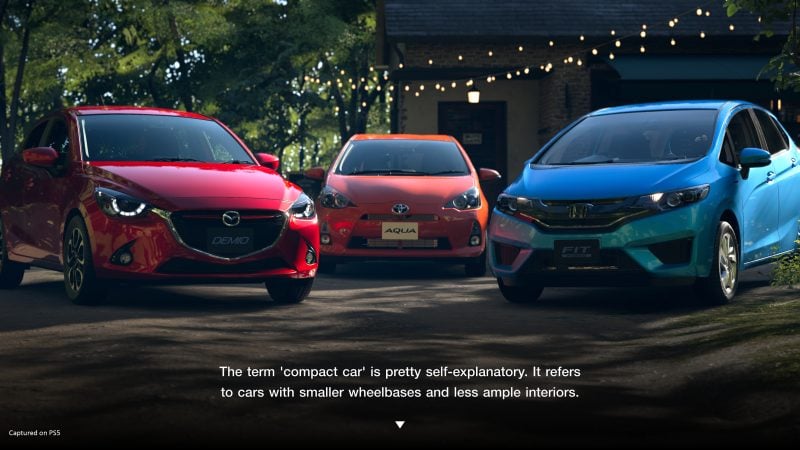
The Gran Turismo Cafe
The heart of Gran Turismo 7 lies in its new “Gran Turismo Cafe”, a warm, inviting virtual cafe for car lovers, tucked away in the woods. There, you will meet Luca, the cafe’s owner, along with other knowledgeable car enthusiasts and designers who can tell you lots of interesting facts about the cars you own. It is executed very well and helps bring the cars to life, putting their significance into context with plenty of beautiful eye-candy to look at along the way. The dialogue, delivered only via text at the bottom of the screen, is just right: informative, yet brief.
The Cafe is also an important part of progressing through the game. Luca will give you “Menu Books” with cars that he wants you to collect or activities that he wants you to perform. The car collections typically focus on a type or model of car, like French hatchbacks or legendary Nissans, while the activities are designed to introduce you to the game’s other features, like buying your first tuning parts or taking your first Photo Scape. After you are given a Menu Book, the game’s actual menu will feature a small compass leading you to the tracks or features that will help you accomplish your goals.
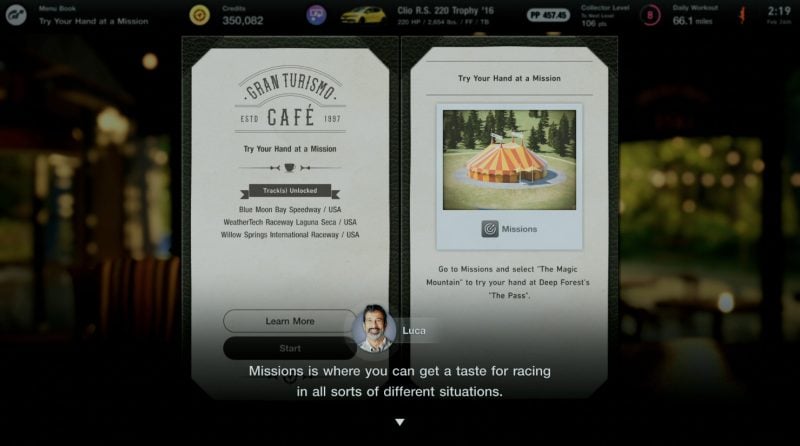
At first, I wasn’t sure I would like the Menu Books. I was concerned they would make the game’s career mode feel like it was “on rails”, preventing me from interacting with the game on my own terms. Starting out, it did do that, with most of the locations on the world map locked away from me. However, as I completed the game’s early missions and progressed, I came to enjoy the sense of purpose and direction that the books provided.
Even better, I finally started to feel that familiar sense of ownership and pride in the cars in my garage, just as I did so many years ago when I first started playing Gran Turismo. This is ultimately thanks to GT7’s extensive car customization options and tools at your disposal.

Car Tuning
Fans of the series have been craving for more car customization options in Gran Turismo games for a long time, and Polyphony Digital has finally delivered. There are plenty of tuning parts to be purchased, and the game does a decent job of explaining to you what each one does. Curiously, the game also has car-specific parts which are awarded (seemingly at random) from the game’s prize-ticket system.
I make no claims to be an expert on tuning, but even with limited knowledge, it is fun to buy the custom parts and use them to start adjusting the car’s performance. Polyphony Digital has built an interesting tool which simulates the car on a track, in the background, to calculate its new Performance Point value. This is a great feature, but I would like to see it taken even further: make it easier for me, the player, to see how these changes affected the car, first hand. I wish there was a way to quickly load my newly-tuned car onto a sort of skid pad or test track, so I could benchmark it myself.
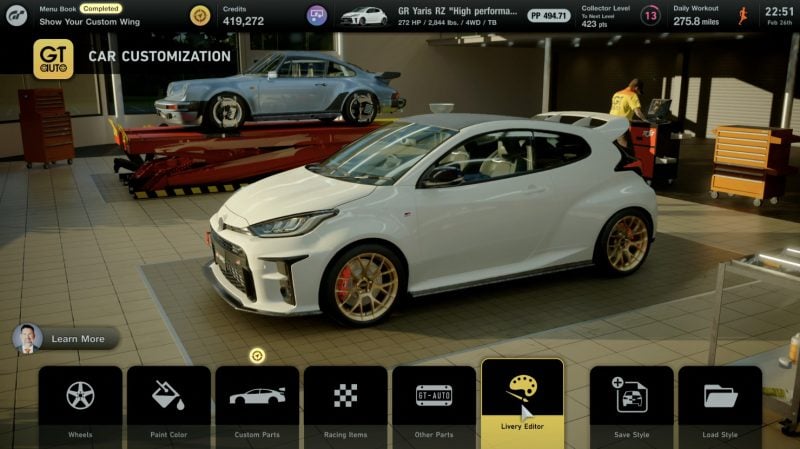
Car Customization
As interesting as the tuning is, the new “GT Auto” shop is where I think the majority of players will spend their time in the game. It’s an all-in-one location that includes a wheel store, car body modifications, and the livery editor.
There are hundreds of wheels to choose from, with a wide variety of styles from a range of different brands. The wheels can also be purchased in different sizes and widths, and you can even choose to have them spaced out for a wider stance. This pairs nicely with the new “wide body” modification option which appears to be available on most models — even cars like the classic VW Beetle! — and applying it prompts my new favorite animation in Gran Turismo history.
Other body modifications vary from model to model. The most frequently available parts appear to be front lips, side skirts, and spoilers, some of which are available in different sizes and designs themselves.
The livery editor is not significantly changed from GT Sport, which I see as a good thing. If you’re a livery editor power user, you might be frustrated at the lack of more powerful tools. However, if you just want to put stickers on your car, the editor’s interface allows you to assemble just about any design your imagination can come up with. Another big positive is the fact that players can import most of their old livery designs from GT Sport, which means that Gran Turismo 7 will start out of the gate with a wide range of high-quality, user-made liveries available. You can also customize your driver’s suit and helmet, capping off a truly impressive range of player customization and personalization options.
This is all backed up by the game’s online community and sharing features, which appear to be largely the same as they were in GT Sport. Although the system is known for its limitations, it is generally an effective way to access designs and check out what your friends have made and shared. In summary, Gran Turismo 7 builds upon an already solid foundation put in place by its predecessor.
It is easy to get lost in just this corner of the game. Customizing, tuning, designing, and sharing your cars is an addictive and enjoyable pursuit; it feels like it could be a separate game all its own.
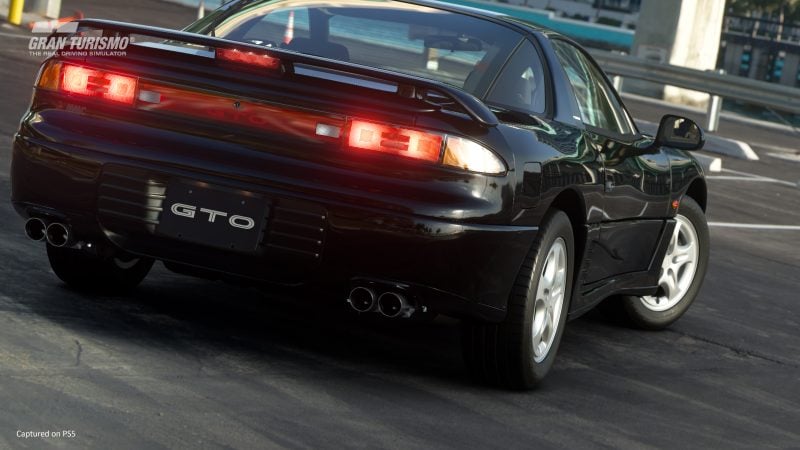
Photo Mode and Scapes
Of course, Gran Turismo’s legendary Photo Mode returns with thousands of Photo Scapes, which allows you to render your virtual cars in real photographs to outstanding results. It’s hard to put a finger on it, but it appears the Photo Scapes generated by GT7 look even better than those from Sport.
Again, Photo Mode could seemingly be an entire game on its own. It is easy to get lost in a vast array of true-to-life camera options and settings available, learning about real-world photography along the way. GT7 seems to offer a bit more guidance in this regard, offering a brief tutorial that invites you to change specific camera settings to see how they affect the end result. It’s a welcome addition to a section of the game which, like car tuning, can be intimidating with its depth.
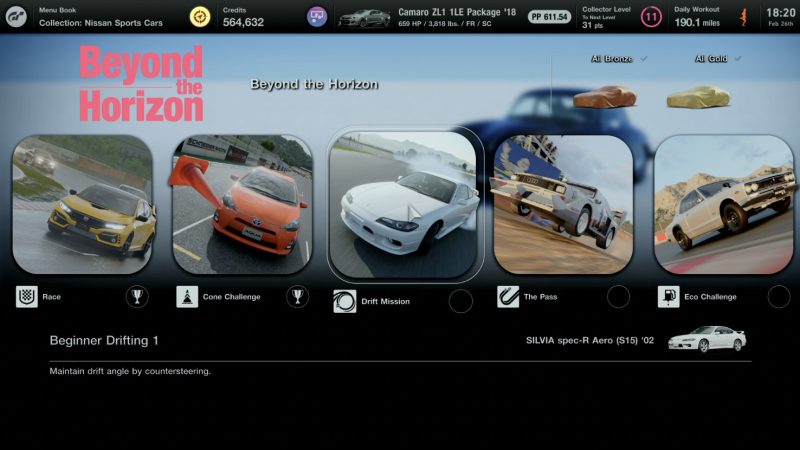
Driving Missions
Driving Missions are also a fairly significant part of the game’s career mode and offer fun, unique, and often quirky diversions from the more serious racing. Missions range from head-to-head battles, drift trials, drag races, and challenges involving some of the game’s more unusual cars like the Willys jeep and the 1968 Fiat 500F.
I actually found the most interesting driving missions related to fuel efficiency and conservation. These offer a unique and rather unusual challenge and do a good job of teaching players about how to conserve fuel — an important skill to have when it comes to racing competitively.

Tracks
The return of original tracks like Trial Mountain and Deep Forest are extremely welcome; it’s great to have them back and I forgot just how much fun they are to drive. It is worth noting the layouts of these two legendary circuits have been modified somewhat, and I will admit to being quite upset when I first saw what Polyphony Digital’s track design team had done to Deep Forest. It is still a shame that the track has lost so much of its original characteristics, but it is so beautifully put together and is still so fun to drive, I’m willing to give them a bit of a pass on this one.
The rest of the track list largely returns from GT Sport, and that’s a good thing: all the real-world classics are there: the Nurburgring, Spa Francorchamps, Laguna Seca, Circuit de la Sarthe, Fuji, Mount Panorama, Suzuka, and the track list goes on.
The new visual driving aides are particularly useful, including highlighted braking zones and unobtrusive floating pointers indicating turn in points, apexes, and track-out targets.
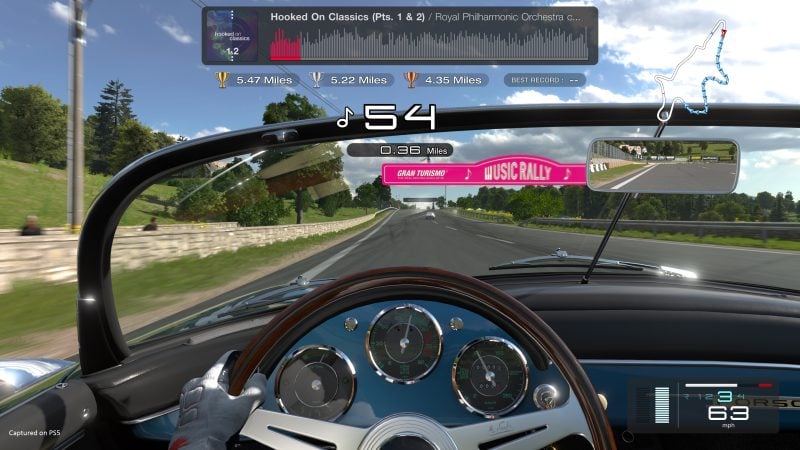
Music Rally
One of the more unusual new features in the game — and one which has been talked about quite a bit — is “Music Rally”. You are introduced to it immediately as the game installs in the background. It’s basically a timed-checkpoint rally mode which encourages you to drive and “keep up” with the beat of the music.
If that sounds a bit strange, well, it is. I didn’t understand the concept when I first learned about it, and after playing it, I still don’t.
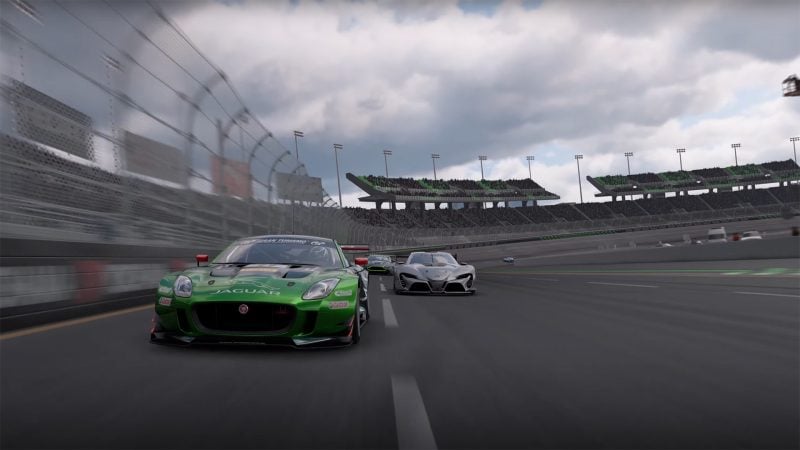
The Bad News
For all its positives, Gran Turismo 7 is not perfect. While the game marks the triumphant return to the classic, single-player gameplay experience that made the series famous, it stumbles when it comes to the actual racing itself.
The computer-controlled cars — I hesitate to use the term “artificial intelligence” here — are shockingly bad drivers. Even on the most difficult opponent settings, they are laughably slow and downright hazardous to drive against.
Most of the races consist of rolling starts, with you starting all the way at the back of the field. Your task, then, is not really to race against the other cars, but simply to pass them all before you run out of laps. This has been unfortunately typical in Gran Turismo games for quite some time now, but the implementation in GT7 is somehow more egregious and frustrating than ever. For such a highly polished and otherwise brilliantly executed game, this awkward gameplay mechanic stands out.
The problem is exaggerated by the fact that Gran Turismo 7’s main characters are essentially the cars themselves, many of which you will first be exposed to as opponents in these opening races. It is strange, then, and somewhat embarrassing to see a car sputtering around the track, right after you have just been told about its impressive performance characteristics. If the car is so good, why is it struggling to pass another car thirty or forty years its senior? The whole situation creates a sort of awkward disconnect between what the game is telling you versus what it’s actually showing you.
For example, when Luca is teaching you about American muscle cars, you’ll find yourself racing against a field of Mustangs, Corvettes, and Vipers. Yet, when I fought my way to the front of the pack in one of the races, I found they were all being led by an old and famously underpowered Delorean. Now, I understand what’s actually going on here, but what does that tell someone who doesn’t know much about cars?
This kind of stuff directly undermines the world that Gran Turismo 7 works so hard to build, and that’s a shame. Even if we concede that Gran Turismo has poor artificial intelligence, in a game that showcases such exquisite attention to detail, it seems baffling it would not pay mind to the running order of the cars you will actually see in the races. This is a sort of low-hanging fruit that Polyphony should really take advantage of.
There is hope that the recently announced Gran Turismo Sophy — a powerful new artificial intelligence system developed in collaboration with Sony AI — can bring improvements in this area. However, we don’t yet know when Sophy will arrive in the game, nor do we know exactly how its technology will be implemented in the game’s single-player modes.
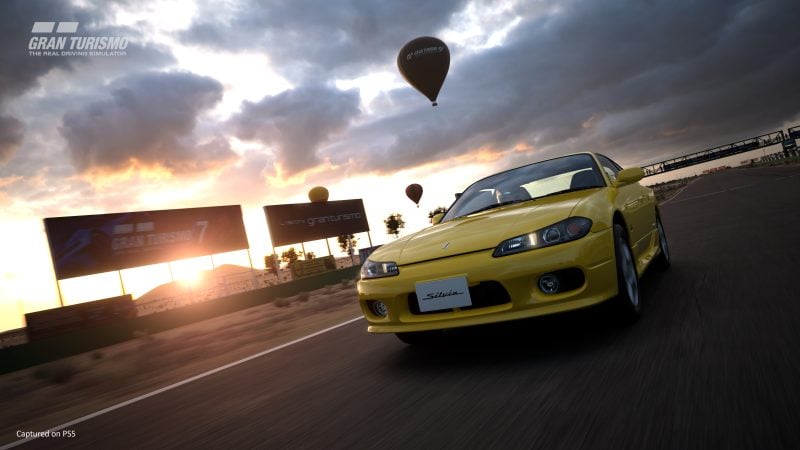
Online Features
Gran Turismo 7’s online features appear to be carried over almost entirely from its predecessor, Gran Turismo Sport, and — for the most part — that’s a very good thing.
There are essentially three major components to the game’s online functionality: Sport Mode, Multiplayer, and Showcase. GT7 also introduces a new online feature called “Meeting Places”, which are essentially permanent, dedicated online lobbies available from each circuit’s menu screen.
Sport Mode
Sport Mode represents the game’s top-tier of competitive, officially sanctioned events. These include a frequently-updated set of Daily Races with specified car and track parameters, and any official, on-going Time Trial events. As in GT Sport, the game tracks your performance and driving etiquette via your Driver Rating and Sportsmanship Rating and attempts to match you with similar drivers. Of course, as anyone who has spent time online in GT Sport can tell you: this certainly doesn’t guarantee you will have enjoyable online racing, but that’s the reality when dealing with other humans.
Multiplayer Mode
Multiplayer mode allows you to create or join online lobbies, or enjoy classic “2 Player Battle” split-screen racing.
As in GT Sport, custom online lobbies give you a fine degree of control over just about every aspect of the race environment. You can restrict players from joining the lobby based upon their Driver Rating or Sportsmanship Rating, or host more private events by limiting lobbies to just your friends. Of course, organizers of competitive events and racing leagues will be disappointed there are not more controls or spectating options — and as someone who has broadcast live events in GT Sport — you can include me in that group. However, for the vast, overwhelming majority of players, these tools do provide plenty of options and control.
“2 Player Battle” allows you to select any track available to you in the game and customize basic race options like the number of laps and grid starting type. However, you can only choose from a pre-selected list of cars. The split-screen gameplay itself appears to run smoothly, and the races are fully-featured, allowing you to save and share race replays as you would from any other event.
Showcase
Finally, as its name implies, the Showcase is where you can view and search for content created by other players in the game, such as car, helmet, and suit liveries, scapes photos, race photos, decals, and race replays. Considering I am playing a pre-release copy of the game, there is not much out there for me to see at the moment, but this area will certainly fill up quickly after release. Some of the largest complaints from this section of GT Sport were related to the search and discoverability of items in the Showcase, and although I cannot confirm this at the moment, I suspect those issues will persist in GT7 as well.
As a whole, Gran Turismo 7’s online functionality feels robust and mature. At this point, Polyphony Digital has well over a decade of experience producing games with extensive online functionality, and it shows. Of course, due to the wide range in quality of internet infrastructure around the world, everyone will have a slightly different experience when interacting with GT7’s online services. With a residential cable internet connection here in the United States, I have always had a positive experience, and I have full confidence that will continue with this latest title.
It does need to be mentioned that Gran Turismo 7 requires a constant internet connection to play the game, and all game saves are stored on Polyphony Digital’s servers. Kazunori Yamauchi has explained this requirement is designed to prevent cheating by modifying the game saves, and the game so frequently interacts with cloud-based services that online connectivity is required. I don’t personally have a problem with this, but it is important to acknowledge what a controversial design feature this is for many people.
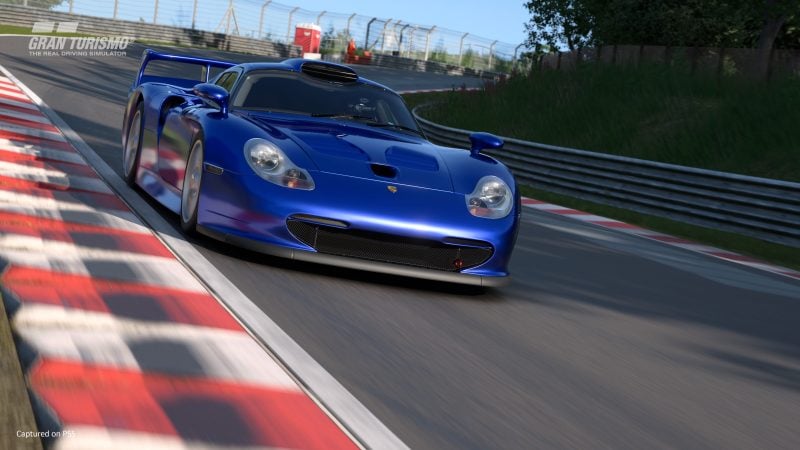
Driving Physics
In terms of handling and driving physics, Gran Turismo 7 is only a minor iteration from Gran Turismo Sport, and if you are watching or reading this review, you probably already have an opinion on whether or not that is a good or bad thing.
Ultimately, the physics in Gran Turismo 7 are fine and will be familiar to anyone who has played a Gran Turismo game before. It’s not difficult to drive cars in Gran Turismo, and — as Kazunori Yamauchi has famously said before — it’s not necessarily difficult to drive cars in real life, either. Driving them fast, and at the limit, is where the real challenge lies. Easy to learn, difficult to master.
Perhaps the most important factor in a game with such a diverse collection of cars is that the physics clearly communicate the difference in performance between each model, and Gran Turismo 7 is successful at doing that. Road cars have a good sense of weight to them, and the faster point-and-shoot racing cars with high levels of downforce are fun and challenging to drive.
It feels as if both oversteer and understeer is more pronounced, but it is seemingly easier to handle the car in those situations. That’s not to say it isn’t still challenging — you have to respond quickly and accurately — but this seems to be an area of improvement and is so satisfying when you get it right.
When driving with the Fanatec GT DD Pro, I was a bit underwhelmed by the road feel communicated, although my driving instantly felt faster and more precise using this officially-licensed direct-drive wheel.
Of course, most players will be interacting with the game using the console’s controller, and unsurprisingly Gran Turismo 7 continues to be excellent in this regard. The PlayStation 5’s DualSense controller is a remarkable piece of hardware and GT7 utilizes it perfectly. While a steering wheel will always provide the best experience for a driving game, GT7’s implementation on the DualSense is probably as good as it gets in the genre in terms of controller gameplay.
This would also be a good time to discuss Gran Turismo 7’s weather effects, which are excellent. Rain really does come down at variable intensity and wets the track surface accordingly. This is all simulated, as you would expect, in the game’s physics engine. Driving in the rain requires a great deal of care, and you can easily hydroplane at high speeds if you are not mindful of you and your car’s limits in more difficult conditions.
If you are familiar with racing in the rain in the “real world”, you know there is frequently more grip to be found when driving off the racing line in wet conditions, where the track surface has more texture outside of the racing line covered in a thin layer of rubber. This appears to be simulated accurately in Gran Turismo 7 as well. Also, as the rain moves away and the track surface begins to dry, you can again find more grip where the water has evaporated.
Rally racing on dirt surfaces again returns to Gran Turismo 7, and again, it is something of an enigma in the physics department. Although I don’t find the dirt-driving physics to be as offensive as some other people do, they are not exactly realistic and can be difficult to get to grips with (no pun intended). Rally racing continues to be on the fringes of gameplay in GT7, so your exposure to it will be limited and tolerable.

Graphics
When I first started playing the game, I quickly realized that I was going to run out of superlatives trying to describe just how good it looks when running on the PlayStation 5 in 4K on an HDR television. It is jaw-droppingly gorgeous. Every screen, every race, and every replay is an absolute feast for the eyes. It’s actually hard to look away.
Car Models
The car models themselves are the pinnacle of the game’s visual achievements. They are true works of art recreated with a shocking level of detail. Of course, we have seen highly detailed car models in games before, but what really struck me in Gran Turismo 7 was the nuanced appearance of the textures that appear on the car’s surfaces, especially in the interior. This might sound absolutely crazy, but some of the interior texture details actually look better than what you would expect from a real video filmed with a real camera. The way light reflects off different materials and patterns in a seat or on a suede steering wheel makes it feel like you can reach into the screen and actually touch it.
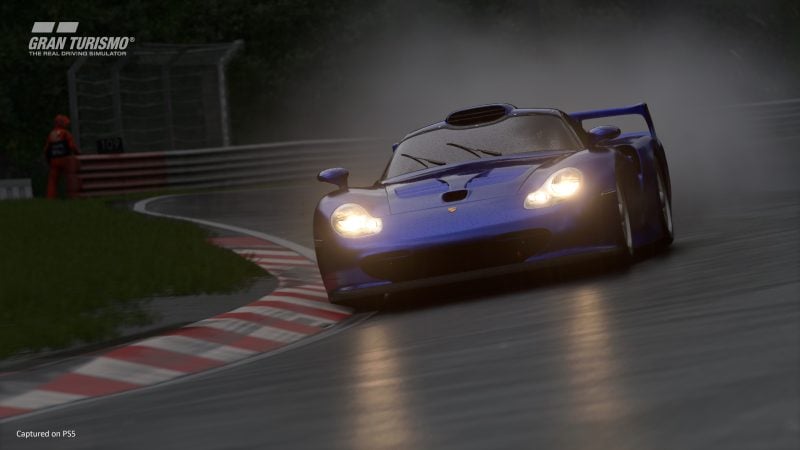
Environments
While this level of extreme detail is limited to menus and cut scenes, the actual gameplay itself is no less impressive. Some environments and locations do seem to have a bit of extra polish or detail, but the discrepancies are not significant enough to be noticeable unless you’re really looking for them. Ultimately, the game’s atmospheric and lighting condition simulations are so good that even underwhelming environments still find a way to look impressive.
The game’s time-of-day and weather changes also bring a sense of realism to Gran Turismo 7’s tracks in a way that is both subtle and dramatic. The atmospheric simulation accurately replicates clouds and how they dissipate the sun’s light. What this means is that, on a partly cloudy day, you can be driving through a corner in direct sunlight, brightly lit with harsh shadows. On the very next lap, a cloud could be obscuring the sun, softening the light and changing the look and feel of the environment, just as it happens in real life.
This effect is so well-executed that it makes the environment come alive more than any other gimmick I have seen employed in a racing game before. It prevents you from using things like baked-in shadows or sun-beams as braking points and instead forces you to look for other, more permanent reference points as you drive.

Time-of-day transitions are equally smooth, and the dusk and dawn conditions can be downright breathtaking. Polyphony Digital has perfected its environmental lighting system to a point where it almost looks better than real-life. Real sunrises and sunsets are not usually so beautiful! But, of course, they don’t always look so stunning in the game, either: not because the game doesn’t look good, but the weather does not always cooperate!
Rain brings yet another dynamic visual element to the environment. Harder rainfall will cause puddles to form both on and off the tarmac, particularly along the edges of curbs. You can also watch the water pool in low areas of the grass, just as you often see in real life. Of course, the in-car view simulates rain-drops on the windshield, which are cleared away by the wipers. The water-spray kicked up from the cars ahead of you also looks great — the only inaccuracy I was able to spot is the spray itself does not appear on the windshield, just the raindrops falling from the sky. That would be a neat feature to have some day.
PlayStation 4 vs. PlayStation 5
At this point, we need to address one of the biggest questions that has been swirling around Gran Turismo 7 since the game was announced: how does it differ between the PlayStation 4 and PlayStation 5? As the first truly multi-platform Gran Turismo game, and with the PlayStation 5 still incredibly hard to find, this is a major question that I know a lot of you are eager to learn more about.
I won’t keep you waiting any more: on the PlayStation 4, Gran Turismo 7 looks and plays just fine. While I testing the game on a PS4 Pro, there were several moments where I literally forgot I was playing on the older hardware. It’s not a totally equivalent experience, though, and the game doesn’t look as crisp and clear as it does on the PS5. There is also no ray-tracing at all in the PS4 version, which is another reason for the drop in visual fidelity.
Frame rates on the PS4 version were a bit of a mixed bag that I cannot entirely explain. I put my PS4 Pro through what I thought would be a “torture test” — a 20-car custom race with “Professional”-level AI, at night, in the rain, on the Nurburgring. It passed with flying colors. However, another race at a sunny Maggiore saw a noticeable and annoying drop in frame rate around certain parts of the track. I noticed it generally occurred when the far horizon was visible and draw distances were at their longest.
Of course, the base model PS4 can only run the game at a maximum 1080P resolution. The game still looks and plays well, but the drop in resolution was obvious.
On the PlayStation 5, you have a bit more control over frame rates. You have the option of choosing between “Prioritize Ray Tracing” or “Prioritize Frame Rate” mode. As explained in the menu, Ray Tracing enables ray tracing in race replays and “3D scenes”. (And, to be clear, ray tracing is never enabled during actual gameplay in any mode.) I have always played the game in Ray Tracing mode and I personally see no need to use the other option. The replays and “3D scenes” in the game all look stunning and smooth to my eye.
Gameplay on the PS5 is also buttery smooth at a solid 60 frames-per-second for the vast majority of the time. In many hours of gameplay, I have only seen the frame rate stutter a single time, rounding the second corner on a sunny day at Willow Springs during one of the license tests. Again, I can’t explain why that particular scene would be any more challenging for the console to render, but as with my experience at Maggiore, the draw distance is especially demanding through that turn.
One of the most noticeable differences between the PS4 and PS5 versions of the game is, of course, loading times. You can fly through loading screens and menus on the PlayStation 5, but be prepared to wait quite a bit longer on the PS4. It’s not terrible, though; if you have played GT Sport, you can expect the loading experience to be much the same.
Unquestionably, the PlayStation 5 offers a better experience in Gran Turismo 7. If you can actually find one and if you have a 4K TV that supports HDR, I highly recommend the upgrade. If you’re not in the position to acquire a PS5, don’t worry about it too much — you are still going to have a very good experience with this game.
I should note that if you own both PS4 and PS5 versions of the game, you can easily switch between them. Just sign into your PlayStation Network account, open the game, and wait a few minutes as your entire game profile is synchronized and updated.
Stay tuned — we’ll cover the differences between the consoles in a separate article and video very soon.
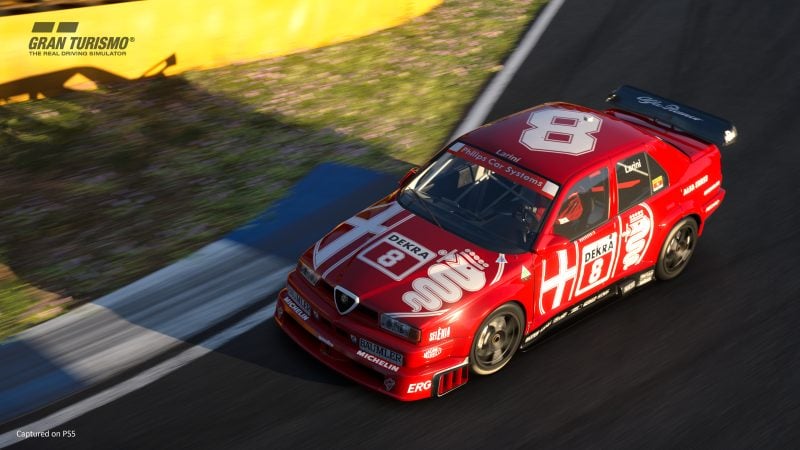
Sound Design
The old jokes about Gran Turismo’s traditionally poor sound design were put to bed back in 2017 with the release of GT Sport, and I am happy to report that Gran Turismo 7 has continued to evolve in this department. To be clear, it’s not as drastic of a change as what we experienced between Gran Turismo 6 and GT Sport, but to my ears the game does sound even better.
Engine notes are unique for each car, and you can, of course, hear specific mechanical characteristics about the car like turbochargers spooling up or the distinct whine of a straight-cut gearbox. The sounds also change quite significantly depending on which view of the car you’re using, just as you would expect.
During the Gran Turismo 7 “State of Play” live stream event, Kazunori Yamauchi mentioned that his audio team had spent a lot of time on atmospheric sounds. Sounds reflect off of different materials in different ways, depending on the texture and hardness of the surface, creating a more natural ambiance. I wasn’t sure what to make of that when he said it, but having played the game now I can understand what he’s talking about.
Even with meager flat-screen TV stereo speakers, the way the sounds change as you drive through a track’s environment is clearly noticeable. Background ambient sounds are subtle and and contribute to the game’s overall sense of place. I stopped my car under a lighted bridge one time and I could even hear the distinct “hum” of an electric box or fluorescent lights!
Gran Turismo 7 does support the PlayStation 5’s “3D Spatial Audio”, and it elevates the aural experience if you use compatible hardware like the official Pulse 3D headset.
Despite having played a few PS5 games with 3D audio, GT7’s implementation is actually a bit of a disconcerting sensation at first. Even something like the menu music seems to bypass your ears entirely and just arrive in your head; if you remember your very first experience with stereo sound, imagine that but taken to the next level.
Naturally it comes into its own on the race track. With 3D audio, the sound has, for want of a better word, weight. You can feel the sound around you — where it’s coming from, what’s making it, and how far away it is — in an entirely new way.

Conclusions
Gran Turismo 7 has a tough task: it has to be approachable and appeal to a whole generation of new players, while also satisfying a massive, rabid, and fiercely critical fanbase. It has to do all of this while carrying on the hallowed tradition of a 25-year-old franchise. Even if we consider aspects of the game that might not have evolved as much as some of us would have liked, Gran Turismo 7 does exactly what it needs to do.
Of course, it’s not perfect. The fact that Gran Turismo 7 is so highly polished and executed at such a high level is what makes the troublesome artificial intelligence in the races so frustrating and disappointing. It is an unfortunate stumbling block that will annoy both new and returning players. The good news is that, with the announcement of Gran Turismo Sophy, we know that improving GT7’s artificial intelligence system is very much on Polyphony Digital’s radar, and those improvements can’t come soon enough.
GT Sport’s evolution since its release has also shown that Polyphony Digital views its modern titles as platforms to be built upon, with new content and extensive changes arriving deep into the game’s life. If GT7 receives a similar level of support — and I expect that it will — the game should evolve into an even more impressive monster.
Ultimately, any game review should answer the fundamental question: is it fun to play? The answer to that is a resounding yes. GT7 makes me feel so many of the same emotions that attracted me to the franchise in the first place. It allows me to experience and customize my favorite cars, in beautifully realistic environments, and race them with friends at some of my favorite tracks around the world. That’s what I want out of a driving game, and GT7 delivers that, to my taste, better than any other title in the genre.
Although Gran Turismo 7 might not break as much new ground as its predecessors did, it builds upon all the characteristics that made them great and combines them into a polished, beautiful package. It is the best Gran Turismo game to date, and one of the best driving games of all time.
Gran Turismo 7
Learn more about how our rating system works.
